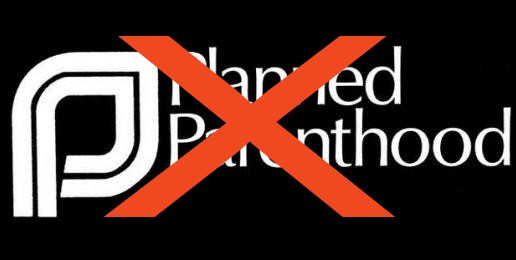
Written by Ross Douthat
I’m hoping to do something broader about the abortion issue in this space soon, given the prominence that the debate over Planned Parenthood funding has suddenly assumed. But for this week a word (well, a few words) on the argument inthis Dana Milbank column, which was also basically the argument in this earlier Milbank column, which is also roughly the argument in this Ruth Marcus column, which is also the argument in this Damon Linker column, which is also a case that Slate’s Will Saletan has made repeatedly in the past, which … well, you get the idea. The claim they’re all making, in different ways, is that even though Planned Parenthood performs hundreds of thousands of abortions every year (while lobbying constantly against any restriction on the practice), to oppose channeling public dollars to its family planning operations is to be objectively pro-abortion, because those operations objectively prevent many more abortions still.
This claim has understandable appeal to the pro-choice-but-uneasy- about-it side of the abortion debate, which is why it’s repeated so often and accepted so uncritically. But as I’ve had reason to argue before (going back years and years), it also runs into some empirical difficulties. Here are a few of them.
First, whether you go state by state in the U.S. or make comparisons across developed countries (within Europe as well as North America), there is very little evidence for the kind of correlation between liberal social policies and lower abortion rates that the alleged “pro-life” case for Planned Parenthood assumes. In the U.S. especially, as I’ve noted before, the correlation often runs the other way: Abortion rates are generally lower in (conservative) states that have more abortion restrictions and fewer publicly funded family planning programs, and higher in (liberal) states where public policy is friendlier to Planned Parenthood, comprehensive sex education, public provision of contraception, etc. Indeed, to the (highly debatable) extent that there exists a “red”/”blue” divide in rates of out-of-wedlock births, it seems to be primarily driven by higher blue-state abortion rates rather than lower blue-state rates of unplanned pregnancy — which is the opposite of what the alleged “pro-life” case for Planned Parenthood would lead one to expect.
Now, this red/blue abortion correlation is not an iron law. In one of the columns cited above, Milbank notes that the ongoing decline in the nation’s abortion rate has been steeper in some liberal states than in conservatives ones over the last few years. I would note that declines are often steeper when there’s more room to fall, but leave that aside for the moment, since all by itself that data actually creates a bigger problem for his argument: The steep decline coincides with the very sort of reduction in federal funding that he claims will lead to more abortions overall. Compare Milbank here …
The Ernst legislation says that “all funds no longer available to Planned Parenthood will continue to be made available to other eligible entities.” But … congressional Republicans’ assurances are suspect, Coleman notes, because they’ve already cut Title X funds by 13 percent, or $40 million, since 2010 — resulting in a loss of 667,000 family-planning patients annually.
… to Milbank here:
… in an Associated Press survey this week of state-by-state changes in abortions since 2010 … states that have passed the most stringent antiabortion laws in recent years, including Indiana, Missouri, Ohio and Oklahoma, have seen their abortions drop by more than 15 percent. But states with virtually unrestricted abortions such as New York, Oregon and Washington have had similar declines. Indeed, five of the six states with the biggest declines — Hawaii (30 percent), New Mexico (24 percent), Nevada and Rhode Island (22 percent) and Connecticut (21 percent) have had no recent laws restricting abortions.
So to be clear: In 2010 Congressional Republicans enacted a more modest version of the policy that Milbank believes will lead to many more abortions, and since 2010 the abortion rate has … fallen in almost every state in the union.
And you don’t have to just look at the 2010-2013 period. Depending on how you calculate things, the nationwide abortion rate has been in steady decline since either the 1980s or the early 1990s. Over that same period, inflation-adjusted Title X funding — again, the funding that is allegedly essential to keeping the abortion rate low — has dropped by 60 percent, according to the Guttmacher Institute’s estimate. So again, Congressional Republicans have been following precisely the policy course that Milbank insists will drive up the abortion rate, not for a few years, but for more than a generation … and the results have been, again, the opposite of what he predicts.
You can also see a related problem with this argument if you look, not just at abortion, but at rates of unplanned pregnancy, which the alleged “pro-life” case for Planned Parenthood stresses as the key to abortion reduction overall. Between 2010 and 2013, as Milbank notes, the rate of unplanned pregnancy and abortion fell in tandem — with the former being an indicator, probably, of recession-driven sexual caution. But if you look at those rates across a longer time horizon, as Michael New noted in an earlier response to Milbank, the unintended pregnancy rate actually rose somewhat from the 1990s until the Great Recession … which is, once again, the same period in which the overall abortion rate precipitously declined.
That decline, in other words, didn’t happen primarily because fewer women were getting pregnant; it happened because fewer pregnant women decided to have abortions. And if the question is whether, a resource for already- pregnant women, Planned Parenthood effectively encourages abortions, I’m not sure that you need to watch that many videos or read that widely to have that question answered; a glance at the PP ratio of abortions to adoption referrals (for 2014 it was — officially — 149:1) tells you most of what you need to know.
Now: Does all of the foregoing mean that no contraceptive-oriented public policy can possibly reduce the abortion rate? No, probably some can, and do: You can find evidence, when other variables are screened out, that certain discrete measures — including the oversold but still noteworthy recent Colorado experiment with long-acting contraception, which I promise to give longer treatment at some point — can in some cases have an impact on abortion rates on the margins. The overall evidence here isn’t quite as straightforward as liberals insist, but it’s stronger than some social conservatives want to believe, and it deserves a role in the debate about what sort of interventions the government should support.
But given how much larger so many other variables (legal, cultural, economic, mysterious) seem to loom, and how little evidence there is overall for some sort of successful “blue model” of abortion reduction in the post-Roe, post-Casey U.S.A., the case for a strictly contraceptive approach to reducing the abortion rate is not strong enough, not nearly strong enough, not anywhere close to strong enough to justify the kind of moral blackmail that moderate liberals keep trying to deploy against pro-lifers to keep money flowing to the nation’s largest purveyor of abortion.
Instead, by any reasonable assessment the moral pressure ought to run the other way. If, like many of the moderate-liberal columnists writing on this issue, you are 1) made at least somewhat uncomfortable by the dismemberment of living human beings in utero but 2) are convinced that Planned Parenthood’s non-abortion-related services are essential to the common good, why not write a column urging Planned Parenthood to, I dunno, get out of the dismemberment business? If all these other services are such a great, crucial, and (allegedly) abortion-reducing good, why do you, center-left journalist, want them perpetually held hostage to the possibility of public outrage over the crushing of tiny bodies in the womb? If a publicly-funded institution does one set of things you really like, and another thing that makes you morally uncomfortable, why are you constantly attacking that organization’s critics and telling them that they just have to live with the combination, instead of urging the organization itself to refocus on the non-lethal, non-dismembering portions of its business?
Because here’s the thing: The cultural consensus in favor of contraception and contraceptive access in this country – in favor, that is, of Milbank’s view of family planning policy, and Marcus’s, and Linker’s, and Saletan’s — is really very, very strong. Separated from the abortion question, as a pro-contraception argument alone, their argument would mostly be a political winner. Yes, many conservatives oppose certain forms of public funding for birth control on limited-government grounds; yes, many religious conservatives fear that contraception and abortion are bound together in a kind of socio-cultural unity, in which no matter what happens on the margins with this program or that one, in the aggregate acceptance of one necessarily feeds the prevalence of the other. But whether or not those fears are justified (here’s my provisional case for why some of them might not be), those combined conservative sentiments matter politically, and increasingly so, primarily because the pro-contraceptive case is wedded, and intimately, to pro-abortion politics. And they would have much, much less influence over our health care debates if the contraception-providing institution constantly defended by liberals as the embodiment of All That Is Worthy of Support were not also … an industrial-scale purveyor of abortion!
So let’s be clear about what’s really going on here. It is not the pro-life movement that’s forced Planned Parenthood to unite actual family planning and mass feticide under one institutional umbrella. It is not the Catholic Church or the Quorum of the Twelve Apostles or the Southern Baptist Convention or the Republican Party that have bundled pap smears and pregnancy tests and HPV vaccines with the kind of grisly business being conducted on those videos. This is Planned Parenthood’s choice; it is liberalism’s choice; it is the respectable center-left of Dana Milbank and Ruth Marcus and Will Saletan that’s telling pro-life and pro-choice Americans alike that contraceptive access and fetal dismemberment are just a package deal, that if you want to fund an institution that makes contraception widely available then you just have to live with those “it’s another boy!” fetal corpses in said institution’s freezer, that’s just the price of women’s health care and contraceptive access, and who are you to complain about paying it, since after all the abortion arm of Planned Parenthood is actually pretty profitable and doesn’t need your tax dollars?
This is a frankly terrible argument, rooted in a form of self-deception that would be recognized as such in any other context. Tell me anything but this, liberals: Tell me that you aren’t just pro-choice but pro-abortion, tell me that abortion is morally necessary and praiseworthy, tell me that it’s as morally neutral as snuffing out a rabbit, tell me that a fetus is just a clump of cells and that pro-lifers are all unhinged zealots. Those arguments, as much as I disagree with them, have a real consistency, a moral logic that actually makes sense and actually justifies the continued funding of Planned Parenthood.
But to concede that pro-lifers might be somewhat right to be troubled by abortion, to shudder along with us just a little bit at the crushing of the unborn human body, and then turn around and still demand the funding of an institution that actually does the quease-inducing killing on the grounds that what’s being funded will help stop that organization from having to crush quite so often, kill quite so prolifically – no, spare me. Spare me. Tell the allegedly “pro-life” institution you support to set down the forceps, put away the vacuum, and then we’ll talk about what kind of family planning programs deserve funding. But don’t bring your worldview’s bloody hands to me and demand my dollars to pay for soap enough to maybe wash a few flecks off.
Download a Planned Parenthood Fact Sheet or a Church Bulletin Insert.
This article was originally posted at The New York Times blog.





















